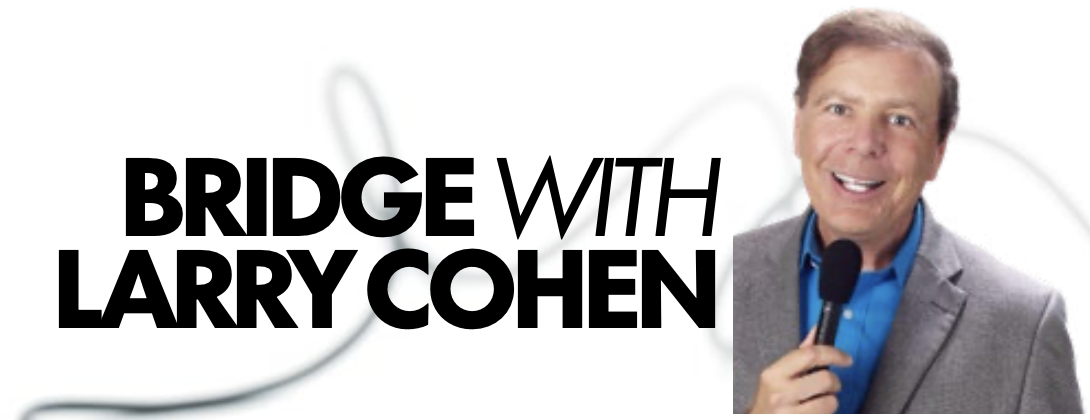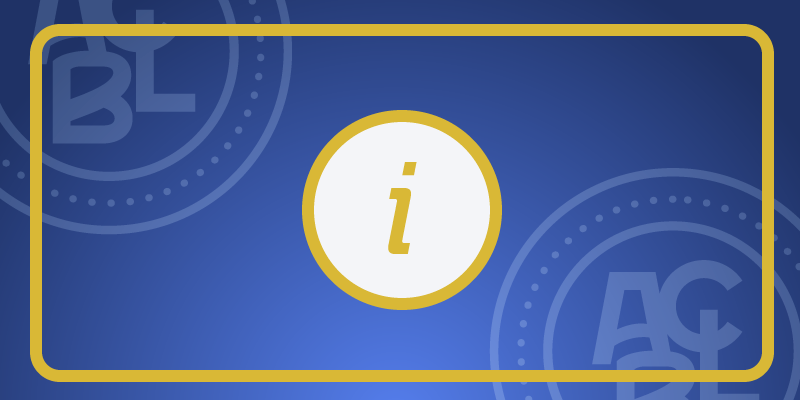



In the previous article, we examined Takeout, Negative, Responsive, Support, and DSI Doubles. This time, we wrap up with a few more doubles which are part of modern bidding.
Game-Try (Maximal) Doubles
This double is used by opener to make a game try.
This allows opener the ability to compete to the three level without inviting game. Suppose you hold: ♠A2 ♥KQ10984 ♦43 ♣K32.
At favorable vulnerability, you open 1♥ and partner raises to 2♥. You’d love to buy it there, but RHO bids 3♦. Since your side has nine trumps, you want to compete to the three-level, so you bid 3♥. However, what if partner thinks you have an invitational hand, and he raises you to 4♥? This is why the Game-Try (Maximal) double exists. In the auction described, 3♥ means what you want it to mean ("Partner, I am just competing for the part score"). If instead, you did have a game-invitational hand, such as: ♠AQ3 ♥KJ987 ♦3 ♣AJ102, you would double. This call says nothing about Diamonds. It just says: "Partner,
I have a 31⁄2 Heart bid. Please go to four with a maximum but retreat to 3♥ with a minimum."
Anytime your side has raised an opening from 1-of-major to 2-of-a-major and Opener’s RHO interferes in the suit directly under the major, then: Double = Artificial game-invitational hand (saying nothing about the suit being doubled) and 3-of-your- major = Just competing for the part score.
This is a dangerous convention since disaster looms if either player forgets the agreement. Be careful to note that this applies only if the overcall is exactly one under. If the auction goes: 1♥-Pass-2♥-Pass-3♣, for example, double would be for penalties. There will be room (in this case, 3♦) for an opener who wishes to make a game try (though such a try would say nothing about Diamonds, since it is the only game try available).
Some old bidding boxes have a Double Card with a "D" on it (as opposed to newer boxes which have an "X"). Wouldn’t it be nice if we could use "D" to make a Penalty Double and "X" for a Takeout double? Why stop there? How about a Bidding box with a "G" for a "Game-try Double" or an "L" for a Lightner Double? Yes, I’m just kidding.
There are other auctions where some experts use this convention (such as after they’ve overcalled and raised).
Quiz
After 1♠-Pass-2♠-(3♥), what should opener rebid with:
F
♠ KJ876
♥ Q32
♦ KQ2
♣K2
G
♠ KJ8732
♥ 32
♦KQ2
♣K2
H
♠ KJ876
♥ A2
♦ KQ32
♣K2
I
♠ KJ876
♥ 2
♦ AKQ32
♣ A2
F Pass - Don’t violate the LAW of Total Tricks in a Larry Cohen article.
G 3♠ - This is not invitational. Same comment as F. With 9 trumps, compete to the three-level.
H Double - This is the way to invite game. If partner has a maximum, he will get you there.
I 4♠ - What you hope to make. No need for a convention.
Other Doubles
Bridge literature (and history) is filled with other kinds of doubles. Many have come and gone. A prime example is "Fishbein." This convention was invented by Harry J. Fishbein and involved bidding against preempts. Double was used as penalty and the next suit was used as an artificial takeout. This convention was so unpopular that I’m told even Fishbein didn’t use "Fishbein".
There are also plenty of doubles which essentially match those described in this article, but are known by different names. The terms "Card Showing", "Competitive", "Cooperative", and "DSI" (used in this series) are all somewhat interchangeable. You might come across descriptions such as a "Balancing Double" or "Reopening Double", but I’d classify those as a subset of the Takeout Double (just referring to the position at the table of the doubler). Penalty doubles are still actually part of the game, and in most cases it will be obvious (but please, not because the doubler unethically slams the red card onto the table). If the auction goes 1♠-Pass-2♠-Pass-4♠, and you have ♠QJ109 of Spades and two Aces, you’ll be pleased to know that you can still make a good old- fashioned penalty double. For the most part, penalties are extracted when one player makes a non-penalty double, but his partner leaves it in.
Penalty Doubles
One situation where you can make a penalty double is where partner has started with a preemptive bid, and one of the opponents enters the auction. For example:
Then you can double (and at Rubber bridge call your Bank Manager).
A double on the first round of bidding is never for penalty.
Here are some examples:
North's double is NOT a penalty double. Is it really likely he will have been dealt Hearts?
North’s double is NOT a penalty double. Why should this be different from the previous example?
East’s double is NOT a penalty double. Is it likely he has Spades? Negative doubles should be played on ALL levels (not through 3♠ or anything like that. In fact, the more they bid, the less likely you are to have their suit).
South’s double is NOT a penalty double. One suit he does not have is Spades.
South’s double is NOT a penalty double. Cater to takeout, not to penalty.
South’s double is NOT a penalty double.
All of these doubles are takeout/card showing. They say: "Partner, I have a good hand. I am interested in hearing from you." If the double is at the 4-level it will frequently be left in. Not because the partner of the doubler has good trumps (unlikely), but because he has nothing to take out to. If a 4-level bid is doubled for "takeout" you take it out with shape - a long suit (usually 5+ cards). If the partner of the doubler is 4-3-3-3, he will typically leave it in and hope to beat them. However, don’t lose the main point: THE DOUBLE IS NOT INTENDED FOR PENALTIES.
Wrap-Up
I’ve tried to cover the most common doubles in our modern game. I believe, it would be highly beneficial for students (especially of intermediate level) to study this topic. Knowing the main uses for double (Takeout, Negative, Responsive, Support, and yes, I reluctantly have to include “Penalty”) is much more important than attempting to learn the latest fancy convention just to keep up with the Joneses. Narrowing the list even further, I would say that a full understanding of Takeout Doubles (plus responses) and Negative Doubles will rapidly improve the bidding of most players.
The later articles (these past few months) were aimed at more advanced players. While it’s useful to have an understanding of DSI, Game-Try, Lead-Directing and Maximal Doubles, those are not nearly as important as the doubles at the start of this series. If you missed any+ of them, I refer you to previous editions of Bridgerama which you will find on the Bridgerama+ web site.
You can also find articles about low-level doubles and more modern bidding on BBO.
This article was written by Larry Cohen and was originally published in Bridgerama+.




great but simple explanation
how can I print this article? Thank you